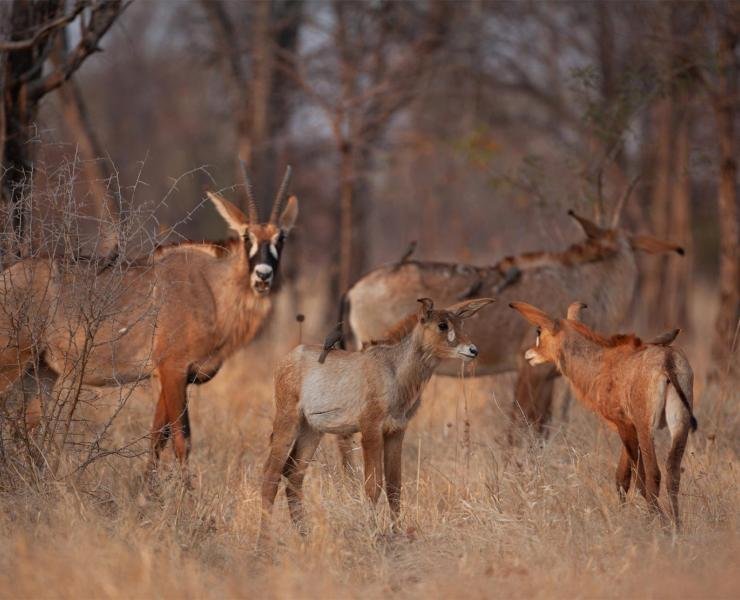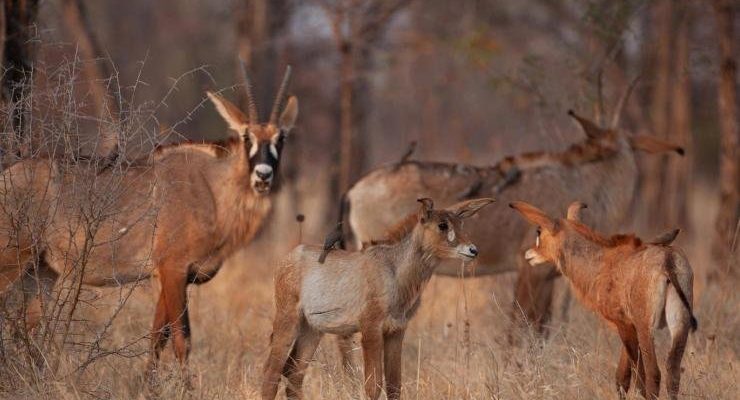
Now, let’s dive into what makes these antelopes tick. They possess remarkable traits that not only aid in survival but also suggest a level of intelligence that’s fascinating to explore. If you’ve ever wondered how these creatures navigate dangers or communicate within their herds, you’re in for an enlightening journey.
Understanding Roan Antelope Behavior
Roan antelopes are social animals, usually found in small groups, and their behavior plays a significant role in their smartness. They typically live in herds of about 10 to 20 individuals, which provides them with safety in numbers. This social structure allows them to engage in various behaviors that showcase their intelligence.
For starters, roan antelopes are known to work together to spot threats. They have an excellent sense of sight, which they use to keep an eye out for predators like lions and hyenas. If one member of the herd spots danger, they communicate through body language and vocalizations. It’s like having a built-in alarm system where each member plays a part in keeping the group safe.
Additionally, the roan antelope is skilled at using its environment to its advantage. They often choose foraging sites based on safety from predators and the availability of food. This selective behavior indicates a level of spatial awareness and foresight that’s quite impressive.
Cognitive Skills and Problem Solving
When it comes to cognitive skills, roan antelopes demonstrate some fascinating problem-solving abilities. For example, they can remember the locations of water sources and grazing areas, which is crucial for survival in their often-dry habitats. This memory helps them make smart decisions, especially during dry seasons when resources become scarce.
Studies suggest that roan antelopes can adapt to changes in their environment. If a predator frequently patrols a specific area, these antelopes can shift their movements to avoid it. This ability to adjust to new challenges shows a level of adaptability that’s a hallmark of intelligent creatures.
Furthermore, when faced with obstacles while foraging, roan antelopes can strategize. They might try different paths or methods to reach their food, showcasing not just instinct, but also learned behavior. It’s like watching a detective at work, piecing together clues to solve a culinary mystery.
Communication Among Roan Antelopes
Communication is another area where the roan antelope shines. They use a variety of vocalizations, such as barks and grunts, to convey information to each other. For instance, a short bark might mean “danger,” while softer sounds can indicate that it’s safe to approach.
Visual signals are also important. Roan antelopes will communicate through body language, like raising their ears or changing their posture, to express their feelings or alertness. This non-verbal communication contributes to the cohesiveness of the herd and strengthens social bonds. You might think of it like a live show where everyone has a part to play, ensuring the audience (the herd) stays engaged and informed.
Such forms of communication also illustrate another layer of their intelligence: the ability to convey complex messages in a nuanced way, depending on the context. It’s similar to how we might use tone and inflection to change the meaning of our words.
Learning Through Experience
Roan antelopes are not just born smart; they learn through experience. Young calves observe their mothers and other herd members as they navigate challenges. This observational learning is crucial for survival. For instance, calves learn how to identify predators and recognize safe food sources by watching older antelopes.
In some cases, calves might even mimic adult behaviors. If an adult uses a particular approach to escape a threat, a young antelope might try the same tactic. It’s a classic example of learning by imitation, showing that these animals have a capacity for cultural transmission, much like humans do.
This ability to learn from experience doesn’t just stop with their young. Adult roan antelopes continue to adapt and modify their behavior based on past encounters with predators or changes in their habitat. It’s as if they keep a mental diary of what works and what doesn’t, helping them avoid mistakes in the future.
Social Structure and Hierarchy
The social structure among roan antelopes is another fascinating aspect of their intelligence. Within the herd, there tends to be a hierarchy, usually led by a dominant male. This social ranking influences behaviors and interactions, much like a workplace dynamic.
The dominant male often has first access to food and mating opportunities. However, being in this position also comes with responsibilities, like protecting the herd from threats. The others in the group recognize and respond to this social ranking, which helps maintain order and cohesion. It’s like having a team captain who leads by example, coordinating the group’s efforts for collective safety.
Roan antelopes show empathy in their social interactions as well. They often engage in mutual grooming, which helps strengthen bonds within the herd. This behavior isn’t just about cleanliness; it also reinforces social ties, improving overall group cohesion.
Understanding the intelligence of the roan antelope offers valuable insights into the complex lives of these graceful creatures. Their behaviors, from cooperative foraging to nuanced communication, reveal a level of cognitive ability that’s both fascinating and essential for their survival.
By studying roan antelopes, we gain a deeper appreciation for the diversity of intelligence in the animal kingdom. They remind us that intelligence isn’t just about brain size but also about how creatures adapt and thrive in their environments. The next time you spot a roan antelope gracefully navigating the grasslands, think about the smart strategies it employs to survive and flourish.
In a world where we often overlook the intelligence of animals, especially those we don’t see every day, roan antelopes shine as a reminder of the wonders of nature. Their cognitive abilities not only help them survive but also enrich the ecosystems they inhabit. So, let’s continue to explore and learn from these remarkable animals, appreciating the subtle brilliance of the wild.

